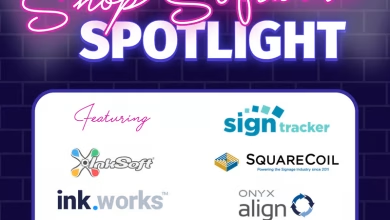Elevating Athletic Wear: Breaking into the Athleisure Market
Learn how to successfully break into the athleisure market with this tip from Beacon Funding.
From the runways to the workplace, athletic wear is taking over and is no longer being relegated to the gym. The “athleisure” trend has taken the fashion world by storm. While wearing curve-hugging yoga pants and embellished T-shirts was once a fire-able offense, it’s now seen as a sign of youth and energy and is even encouraged by some workplaces. Walking out of the house in sweatshirts with pithy sayings isn’t the mark of laziness anymore, but rather an ode to pop culture.
This change in the fashion tide opens the door for the decorated apparel industry to make a major profit. But before you can cash in on the market, you’ll need to fully understand what athleisure is, where decorated apparel fits in, and what it takes to adopt the style into your business.
What it is
Athleisure is what you wear to the yoga studio-but it’s also what you wear to brunch, or work, or a date. It’s an amalgam of comfort and style that’s pushing out traditional casualwear and even overtaking fast fashion. It’s a way to rebel against the constraint of a suit-and-tie lifestyle without eschewing style completely.
In the athleisure world, fashion sneakers and spandex beat out stilettos and denim every time. The perfect athleisure look combines form and function to allow the wearer to hop from the gym to lunch with friends and even to the office without changing.
Athleisure isn’t just for your stereotypical athletes. People who have never attempted the downward facing dog practically live in yoga pants, sports bras aren’t hidden under baggy T-shirts at the gym, but rather peek out from under women’s racerback tank tops while they grab coffee with friends, and sneakers have become more about fashion statements than arch support.
Where you fit in
Athleisure’s growing presence in the fashion industry vastly increases the market for decorated apparel, but breaking into it will require a certain amount of expansion and change. The style and the customers it attracts want more than a simple T-shirt. It needs to be more and do more. To capitalize on the market, consider offering these goods and services:
Performance fabrics: When it comes to athleisure, consumers are willing to pay more for quality. The pieces are considered investments that won’t fade from the mainstream in a few months. Because of this, they expect the clothing to do more. T-shirts should wick up sweat and control odor. Special performance level fabrics do just that.
New and flattering styles: The traditional cotton T-shirt doesn’t cut it anymore. Athleisure enthusiasts aren’t willing to sacrifice style for function or comfort; they expect them to be wrapped into one. The best yoga pants not only look good and feel good but also have a hidden pocket to tuck a locker key or phone into.
Part of your job will be to start offering the styles buyers are clamoring to get. Tank tops, yoga pants, fitted Ts, and zip-ups top the list of the most popular items. Combined with the fabrics mentioned earlier, these are the pieces that will bring in the most business and keep you current in the fashion world.
What you’ll need
Before you can really start to profit from the new products, you’ll need to get the right equipment. A few pieces that may be needed to create quality athleisure garments are:
Sublimation printers: Though other printers can be used to produce athleisure clothing, dye sublimation has benefits that other printing methods don’t. With sublimation, you can create the all over designs often seen in athleisure. This type of printing also allows for maximum detail and a wider range of colors. Since dye sublimation uses heat in the printing process, it is capable of printing on polyester, a common fabric used in athleisure garments. Because of these advantages, sublimation is a technique to seriously consider.
Direct-to-Garment (D2) printers: These printers are also excellent options for printing on athleisure. Like dye sublimation, D2 is a form of digital printing. However, it lacks the heating element that sublimation has. The ability to print lower quantities at an affordable price gives D2 printers an advantage over other printers. This is especially beneficial when breaking into a new market. It allows you to start with small jobs without shrinking your profit margin.
Embellishers: The whole point of athleisure is to elevate gym wear to a new, more stylish level. For some, that means embellishment. The ability to add sequins, gems, and glitter to items may be a major selling point when offering athleisure options to customers.
Finding room in the budget
This all sounds great, doesn’t it? Who doesn’t want to tap into a new and growing market? The only problem with entering the market is the initial cost. Purchasing the equipment mentioned earlier can take a substantial chunk out of your hard-earned savings. Luckily, if you play your cards right, you’ll be able to hold off paying for it until it starts generating some revenue. While paying with cash is probably out of the question for most owners, financing offers a flurry of advantages.
Buy now, pay later: Some equipment financing companies allow clients to finance 100 percent of equipment and will even defer the payments a few months. This plan lets you generate some revenue before putting even a penny into the equipment. Imagine how helpful that could be when breaking into a new market.
Step programs: This flexible financing program can be a lifesaver when you’re entering a new market or expanding. Rather than paying the same monthly payment for the life of the lease, you build your way up to paying the full, agreed-upon rate. In those crucial first months of expansion, you’ll have a lower monthly payment. This allows you to save a larger share of the revenue. Once business picks up and the equipment starts earning its keep, you increase your monthly payments.
Tax savings: In addition, to be able to set up a unique payment plan, financing your equipment provides tax benefits not available when paying cash or with a traditional bank loan. With Section 179 tax deductions, you can deduct up to 100 percent of the cost of qualifying equipment. Those potential savings alone make a strong case for financing equipment.
Lease-to-own: A huge and entirely too common misconception surrounding financing is that you can’t keep the equipment at the end of the lease. Though this is true for some plans, many equipment financing companies have lease-to-own programs that help ensure that you keep the equipment at the end of the lease. Financing simply offers a way to get the equipment you need without a major upfront cost.
Why it’s worth it
Athleisure giants don’t just sell articles of clothing; they sell a lifestyle. In a world overrun by fast food and fast fashion, they offer a pathway to health, wellness, and fitness, and that’s something people want to buy into. With no signs of slowing, athleisure has opened a door for decorated apparel. The ability to provide personalized, customized, and unique athleisure clothing might be something your customers are willing to buy into, too.




